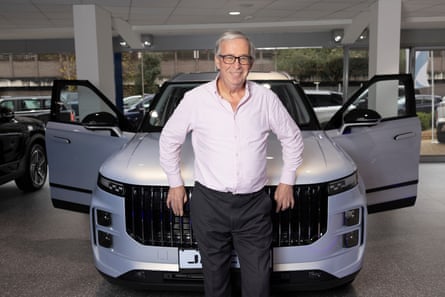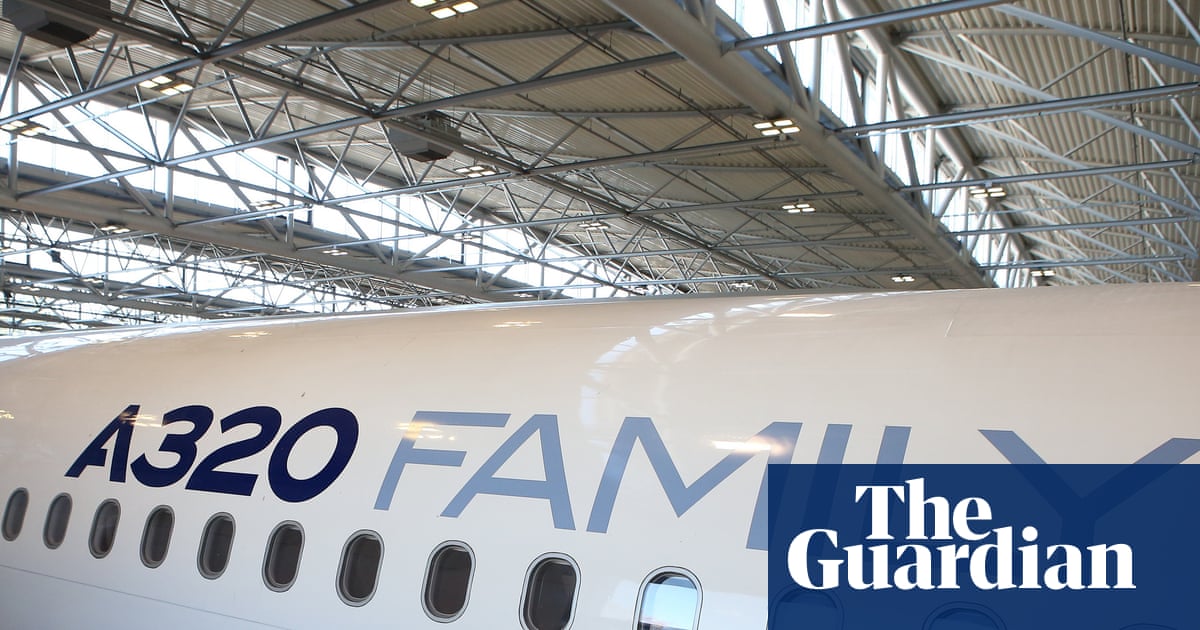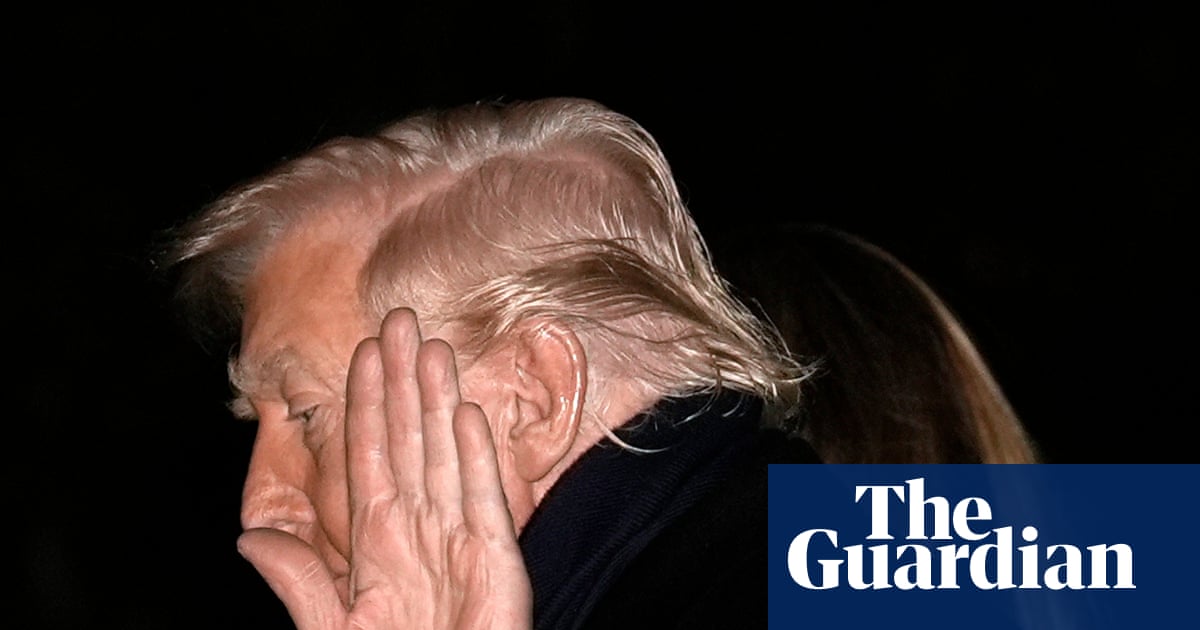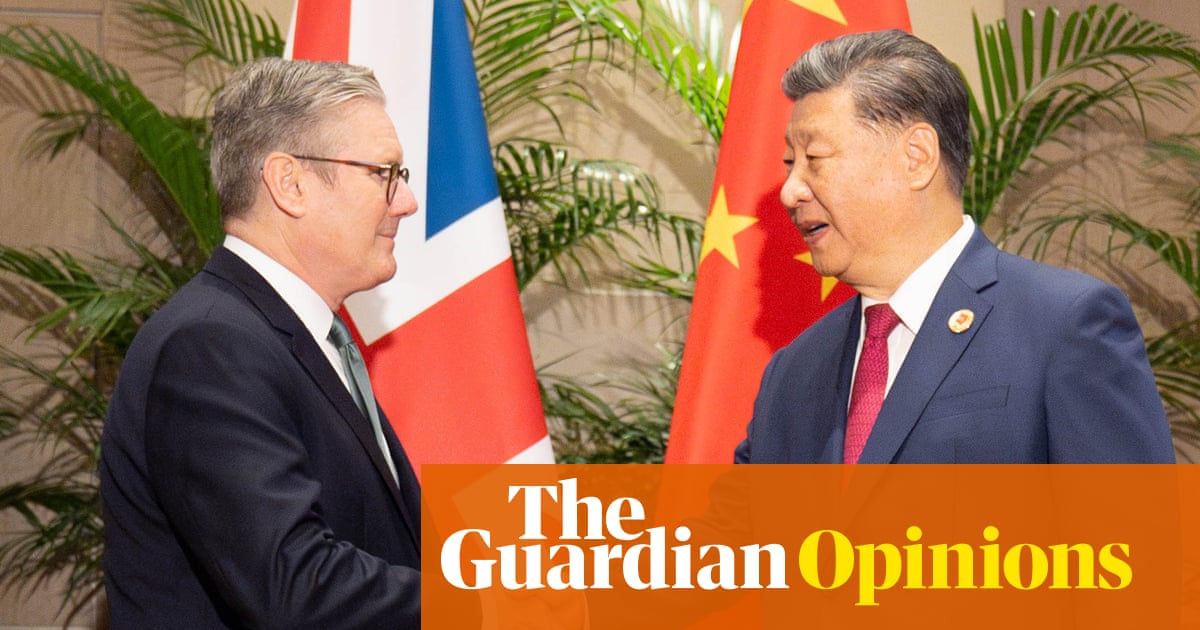When Tesla wanted to catch the eye of British buyers, it put its cars and bright signage at a dealership in west London’s prominent Hogarth roundabout. Exposure to half a million drivers every day helped the US carmaker to become the dominant electric vehicle seller in the UK. Yet drivers passing by that site now see something different: twin Chinese brands Omoda and Jaecoo, both owned by the state-controlled manufacturer Chery.
Chinese cars are on a roll across Europe – they outsold Korean rivals in western Europe for the first time in September. That success is highly reliant on the UK. Of the half a million Chinese cars sold in western Europe between January and September, 30% were bought by Britons, according to Matthias Schmidt, a Berlin-based automotive analyst.
“Their success has been remarkable,” says Steve Young, the managing director of the Hogarth dealership, which is owned by Turkish group Çetaş Otomotiv. “The site that we have here makes a statement. It’s a flag waver for us. Every minute or so the traffic lights change, and drivers are stuck outside our window.”

China’s carmakers – backed heavily by its national and regional governments – have used the transition to electric cars as an opportunity to dominate the global automotive market.
Trade barriers have been raised in the EU and US and the industry is struggling globally with supply chain issues. The decision by the Netherlands to take control of Nexperia, a Chinese-owned chipmaker, has prompted tit-for-tat export controls on vital semiconductors. And Beijing’s restrictions on rare earth metals used in everything from motors to magnets have also sent shivers down car executives’ spines, as Brussels scrambles to negotiate a similar pause to last month’s US-China trade agreement.
Despite such hurdles, the UK remains resolutely open, making it a key battleground.
The sales push in Britain has been led by China’s BYD, which is expected to overtake Tesla as the world’s largest maker of battery electric vehicles this year. The UK has become BYD’s biggest market outside China, after sales in September surged tenfold compared with a year earlier.
Yet others have joined the party: state-owned Chery was actually the top-selling Chinese manufacturer in the UK in October. Its Jaecoo, Omoda and Chery brands have also targeted the UK with electric cars and hybrids, which combine a smaller battery with a petrol engine. MG has the name of a venerable UK brand, but monthly sales of its products, made by the state-owned SAIC, have overtaken those of Vauxhall, a resolutely British nameplate (albeit mostly made in Germany).
Meanwhile, Sweden-based brands Volvo and Polestar are both controlled by China’s Geely, while Great Wall Motor, Volkswagen-backed Xpeng and Stellantis-backed Leapmotor have each sold more than 1,000 cars in the UK this year, ahead of an expected barrage of product launches.
In the US, Chinese electric and hybrid cars face 100% tariffs. EU electric car tariffs range from 17% to 38%, depending on the manufacturer. Those are not prohibitive, and hybrids are not included (giving a perverse incentive for Chinese carmakers to sell vehicles that emit more pollution). Italy and Spain have also emerged as targets for Chinese sellers.
But the UK – a big importer of cars – has refrained from new tariffs, and the government has been keen to import electric models in order to hit carbon dioxide reduction targets.
Mike Hawes, the chief executive of the Society of Motor Manufacturers and Traders, a lobby group, says the UK wants both a vibrant domestic market and a strong manufacturing base – all underpinned by “free and fair trade”.
“UK car buyers benefit from a choice of more than 50 global brands and the market has always been open to new entrants,” he says. Chinese brands are “driving competition as more established market players demonstrate their agility, accelerating model development and reducing costs”.
Diplomatic concerns may also have played a role, although the recent tensions over alleged spying by China highlight Britain’s changeable stance towards the world’s second biggest economy.
“The biggest influence [in the UK not imposing tariffs] is there isn’t a domestic automotive manufacturer to protect,” says Tu Le, an ex-automotive worker in Detroit and Shanghai who founded Sino Auto Insights, a consultancy.
Schmidt says British consumers have been more open to previous waves of foreign brands as well. In the 1980s, Margaret Thatcher as prime minister tempted the Japanese carmakers Nissan, Honda and Toyota to produce in the UK, selling it as the gateway to Europe. (That advantage was complicated 40 years later by rules of origin brought in as a consequence of Brexit.) The next wave was Korean cars, this time imported.
“History is repeating itself,” says Schmidt. Britain has become Chinese brands’ first port of call in Europe – albeit without any manufacturing footprint as yet.
after newsletter promotion
Poor quality Chinese cars used to be treated as a punchline by western executives. The joke has long worn thin. China overtook Japan as the world’s largest exporter in 2023. As well as Europe, Chinese carmakers have continued to sell in Russia, while European manufacturers have been blocked since the full-scale invasion of Ukraine in 2022. Latin America is also of increasing interest.
“There have been two waves to the Chinese entrants coming to Europe,” says Young. “Some of the initial product was not fit for the UK market. The brands generally have upped their game.”
Yet the push for scale – often backed by city regions competing with each other – has resulted in massive overcapacity in the Chinese automotive factories. The industry could theoretically make 55.5m vehicles annually, but actually used just under half that potential, according to data cited by Bloomberg from the Shanghai-based Gasgoo Automotive Research Institute.
That has led to a brutal price war in the Chinese market. The Chinese Communist party has told manufacturers to stop trying to undercut each other, fearing “involution”, or competition so intense that it could stop progress as companies enter a self-defeating spiral.
Price wars at home mean exports make even more sense. Yet Andrew Bergbaum, the global leader of the automotive and industrial practice at AlixPartners, a consultancy, says the Chinese companies that have managed to break into the European market are often selling their cars at much higher prices than at home – hardly an indicator of desperation to offload products.
“If you look at the brands that are actually exporting, they’re typically the strong brands,” Bergbaum says. “It’s more of a strategy than a dumping of capacity. The fact that they can sell at a higher price point is very attractive.”
China’s market assault comes at a time when Europe is also struggling with excess factory capacity. AlixPartners estimated that European carmakers may have eight factories too many, as they may lose as many as 2 million sales to Chinese brands in the coming years.
That excess space, coupled with a tariff incentive to build in Europe, could mean Chinese carmakers snap up sites from older rivals. That has already happened in Barcelona, where Japan’s Nissan closed its factory, only for Chery to take it over.
European politicians and carmakers have argued forcefully that Chinese carmakers have benefited from heavy subsidies that have allowed them to undercut (although western carmakers have hardly been starved of assistance from their own governments). But a key reason for the Chinese sales surge is simple. Consumers like them.
Tanya Sinclair, chief executive of Electric Vehicles UK, an industry-funded group pushing to increase battery sales, says that “UK drivers are benefiting”.
“Some names may be new, but the appeal is clear: high standards, competitive pricing, and innovation that raises the bar for everyone,” she says. “There will always be a strong place for British-built vehicles, provided they’re part of our battery-electric future. But competition and choice are what keep the market strong.”
Look inside the cars, and the draw for consumers becomes clear. Bells and whistles available in some Chinese brands range from the perhaps limited appeal of in-built karaoke apps, to more advanced technology such as driver assistance. Crucially, the manufacturers are offering many of those features at much lower prices than European premium brands.
“At the end of the day, it’s value,” says Le. “These cars are good. If I build better products that provide more value to my customer, I win.”

 3 weeks ago
26
3 weeks ago
26

















































